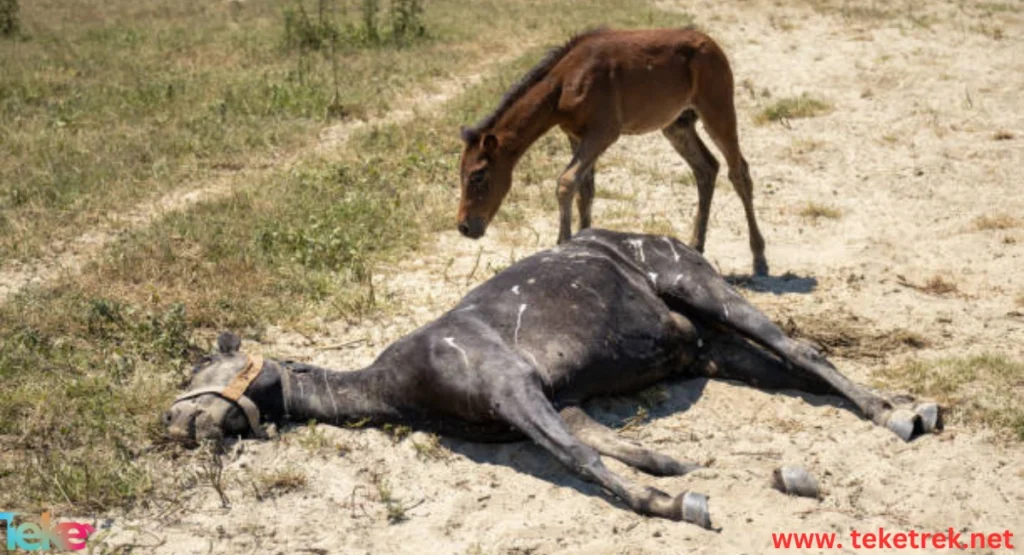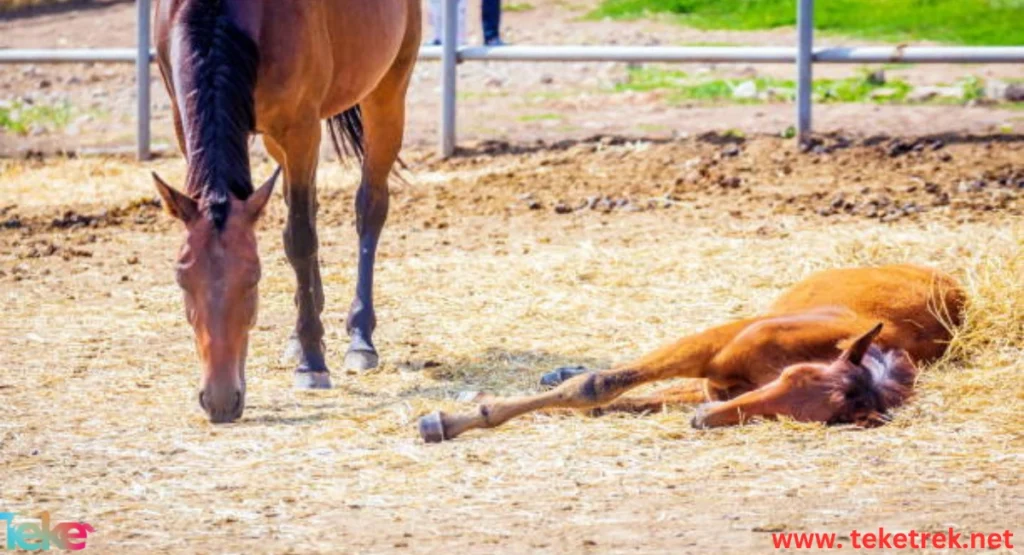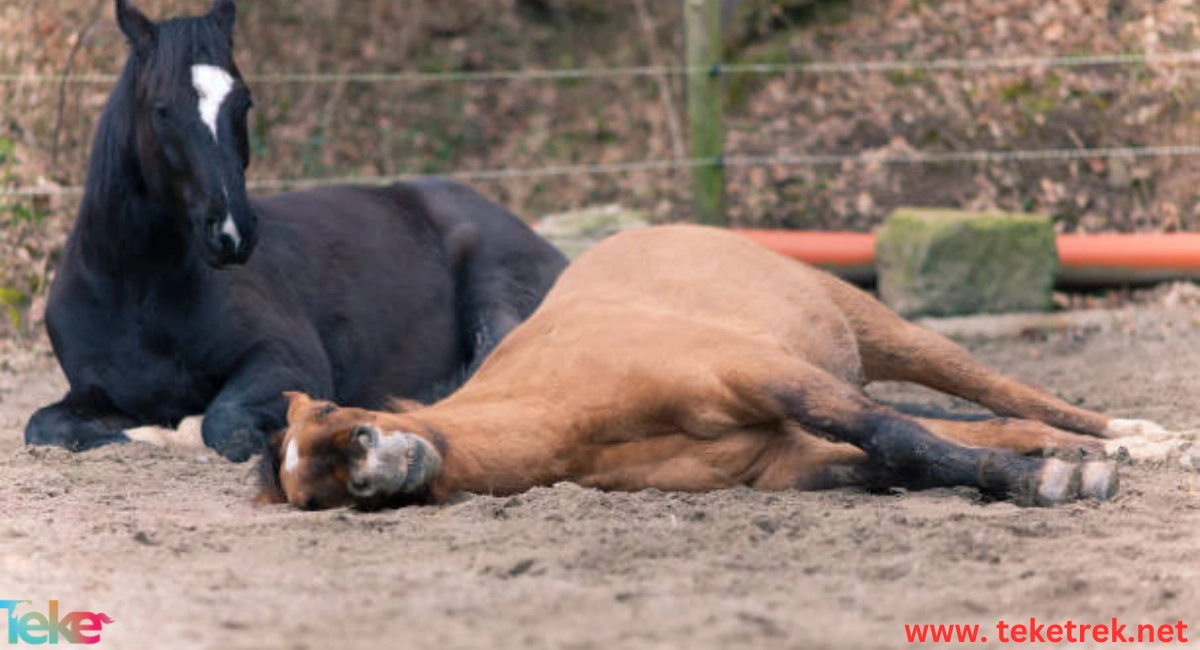Horses are beloved animals for many people as they have an attractive body shape and structure. They are also very sensitive animals despite their strength and toughness. They were used in the past in wars and travel to distant areas, and now they are used in races. They were among the most beloved animals of our master Solomon, peace be upon him. It is necessary to know the diseases that affect horses and prevent them. Among these diseases is horse strangulation, which is an acute bacterial infection that affects the respiratory system of horses caused by gram-positive bacteria.
Horse strangulation leads to the emergence of respiratory problems accompanied by high temperature, loss of appetite, and the appearance of abscesses resulting from swelling of the lymph nodes in the neck and head. This infection occurs as a result of a risk to the immune system, or due to bacteria invading the body. Here are the most important details from teketrek، related to horse strangulation, its causes, and methods of treatment.
Causes of Strep in Horses
There are several reasons that lead to horses being infected with strep in horses, which is caused by a Gram-positive bacteria infection. These bacteria are transmitted through several reasons, including the following:
- These bacteria are transmitted through direct contact between horses, as healthy horses become infected through contact with infected horses through saliva or nasal secretions.
- When horses touch contaminated tools and equipment that carry the same bacteria, such as belts, saddles, or water containers.
- Poor ventilation of the place, barns, and stables is one of the reasons that lead to the accumulation of bacteria and their rapid spread among horses.
- The polluted environment in which horses live, which is full of bacteria on surfaces and floors, contributes to the transmission of infection.
- Lack of attention to horse hygiene and failure to disinfect equipment are among the causes of infection transmission.
- Exposing horses to extreme cold or stress helps increase bacteria and weaken the immune system.
- Not isolating infected horses from healthy horses contributes to the spread of infection.
- Insects are also a major cause of transmission of infection between horses.
- Horses eating contaminated food, contaminated water and nasal secretions from infected horses leads to the rapid transmission of bacteria from one horse to another.

Common Horse choke symptoms
There are many symptoms and signs that appear on horses that are a result of horses being infected with equine strangulation, and these symptoms vary in severity, including the following:
- High body temperature of the horse, exceeding 39.5 degrees Celsius.
- Nasal discharge, which is initially clear and then turns into pus or mixed with blood.Swelling of the lymph nodes in the throat area is a common symptom of equine strangulation, which leads to the appearance of lumps under the jaw and face.
- Coughing is one of the causes of Gram-positive bacterial infection, and the cough may be dry or wet due to inflammation in the upper respiratory tract.
- Abscesses are formed in the lymph nodes, which appear in the advanced stages of the disease and may burst and secrete pus.
- Difficulty swallowing and breathing due to swelling of the glands.
- Poor appetite and general weakness of the body.
- The horse finds it difficult to open its mouth normally due to swelling in the jaw and surrounding tissues.
Horse choke treatment
Horse strangulation is detected through the appearance of the previous symptoms, and then the doctor conducts an examination and takes a swab to ensure the presence of bacteria in the blood of the infected horse, after which he prescribes effective antibiotics to quickly remove the bacteria. The horse is also given nasal drops and intramuscular vaccines to alleviate the severity of the symptoms.
The horse should be given a lot of rest and not exert any effort, especially when symptoms first appear, to avoid a severe decrease in its immune system due to bacterial attack. New nutrition for the horse during this period must strengthen its immunity, while giving the horse some vitamins that strengthen the immune system.
Prevention of horse strangulation
There are several ways to prevent horse strangulation and reduce the spread of the disease among healthy horses, including the following:
- Isolating infected horses from healthy horses to avoid the spread of bacterial infection due to volatile secretions.
- Isolate new horses from existing horses in the barn for three weeks until it is confirmed that they are not infected.
- Cleaning and sterilizing the place periodically is necessary to eliminate bacteria continuously and cleaning tools, saddles and equipment also reduces the survival of bacteria on surfaces.
- Giving horses the required vaccinations and vaccines against this disease and other diseases reduces the risk of infection and the severity of symptoms.
- Periodic veterinary examinations of horses to detect signs of the disease and ensure the health of the horse’s respiratory system are necessary to prevent equine strangulation.

How to improve the stable environment and ventilation to prevent equine strangulation
Ventilating the stable and the environment in which the horse is located is very important to prevent equine strangulation and the place is ventilated daily once or twice a day by moving the horse to a clean area, then cleaning the barn with effective cleaning tools to eliminate bacteria present in the place and then opening the place to let in fresh air, which contributes to preventing the proliferation of bacteria in the place.
Finally, continuous veterinary care is very important in maintaining the health of the horse. Regularly showing the horse to the veterinarian allows for the detection of any respiratory infection, which facilitates its rapid treatment. This infection usually affects young foals and older horses due to their weak immunity, so the horse’s health must be maintained through the preventive methods we mentioned. Good bye.





